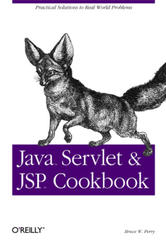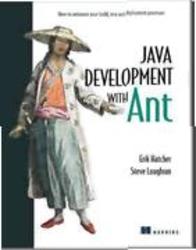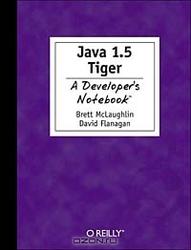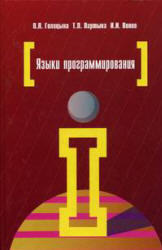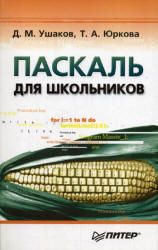The Jakarta Struts Cookbook is an amazing collection of code solutions to common — and uncommon — problems encountered when building web applications with the Struts Framework. With solutions to real-world problems just a few page flips away, this quick, look-up reference is perfect for independent developers, large development teams, and everyone in between who wishes to use the Struts Framework to its fullest potential.

Just as important, the Struts communityone of the largest in the world of open source developmentactively supports fellow Struts users and drives Struts development. The struts-user mailing list often receives upwards of one hundred messages a day. Struts novices, experienced Struts users, and Struts committers are all active on this list. It has become an open, tolerant community in which the precept of knowledge sharing thrives in a congenial and refreshingly humorous environment. It's with that attitude that I have written this book.
As developers, we latch onto tools, patterns, and software that works for us. Once we find a certain way of solving a problem, we tend to stick with that solution. We are naturally wary of new approaches to the same problem. It goes back to the old saying, "If it ain't broke, don't fix it."
For a Struts developer, staying with the comfortable and familiar techniques will get you by, but you'll be missing out on many innovative, creative, and entertaining ways of working with Struts. My aim with this book is to take away some of that anxiety when it comes to trying a new way of solving what may be an old problem.
Copyright
Preface
Audience
Scope and Organization
Assumptions This Book Makes
Conventions Used in This Book
Using Code Examples
Comments and Questions
Safari Enabled
Acknowledgments
Chapter 1. Getting Started: Enabling Struts Development
Introduction
Recipe 1.1. Downloading Struts
Recipe 1.2. Deploying the Struts Example Application
Recipe 1.3. Migrating from Struts 1.0 to Struts 1.1
Recipe 1.4. Upgrading from Struts 1.1 to Struts 1.2
Recipe 1.5. Converting JSP Applications to Struts
Recipe 1.6. Managing Struts Configuration Files
Recipe 1.7. Using Ant to Build and Deploy
Recipe 1.8. Generating Struts Configuration Files Using XDoclet
Chapter 2. Configuring Struts Applications
Introduction
Recipe 2.1. Using Plug-ins for Application Initialization
Recipe 2.2. Eliminating Tag Library Declarations
Recipe 2.3. Using Constants on JSPs
Recipe 2.4. Using Multiple Struts Configuration Files
Recipe 2.5. Factoring Your Application into Modules
Recipe 2.6. Using Multiple Resource Bundles
Recipe 2.7. Accessing Message Resources from a Database
Recipe 2.8. Selectively Disabling Actions
Chapter 3. User Interface
Introduction
Recipe 3.1. Using JSTL
Recipe 3.2. Using the Struts-EL Tags
Recipe 3.3. Displaying Indexed Properties
Recipe 3.4. Using Indexed Properties on Forms
Recipe 3.5. Using Indexed Properties in a JSTL Loop
Recipe 3.6. Submitting a Form from an Image
Recipe 3.7. Generating JavaScript on the Fly
Recipe 3.8. Dynamically Changing Select Options Using JavaScript
Recipe 3.9. Generating Dynamic Select List Options
Recipe 3.10. Filtering Text Input
Recipe 3.11. Generating a Set of Related Radio Buttons
Recipe 3.12. Handling Unchecked Checkboxes
Recipe 3.13. Handling Date Input Fields
Recipe 3.14. Setting Tab Order
Recipe 3.15. Generating URLs
Recipe 3.16. Adding Request Parameters to a Link
Recipe 3.17. Using Frames
Recipe 3.18. Defeating Browser Caching
Chapter 4. Tables, Sorting, and Grouping
Introduction
Recipe 4.1. Creating a Horizontal Bar Chart
Recipe 4.2. Creating a Vertical Bar Chart
Recipe 4.3. Alternating Table Row Colors
Recipe 4.4. Sorting HTML Tables
Recipe 4.5. Paging Tables
Recipe 4.6. Using the Display Tag Library
Chapter 5. Processing Forms
Introduction
Recipe 5.1. Creating Dynamic Action Forms
Recipe 5.2. Setting DynaActionForm Initial Values
Recipe 5.3. Using a List-Backed Form Property
Recipe 5.4. Using a Map-Backed Form Property
Recipe 5.5. Lazy Dynamic Action Forms
Recipe 5.6. Populating Value Objects from ActionForms
Recipe 5.7. Automatically Creating ActionForms
Chapter 6. Leveraging Actions
Introduction
Recipe 6.1. Creating a Base Action
Recipe 6.2. Relaying Actions
Recipe 6.3. Returning the HTTP Response
Recipe 6.4. Writing Thread-Safe Actions
Recipe 6.5. Forwarding Requests
Recipe 6.6. Including the Response from a Servlet or JSP
Recipe 6.7. Changing the Current Module
Recipe 6.8. Managing Related Operations from a Central Action
Recipe 6.9. Submitting a Form from Localized Form Controls
Recipe 6.10. Dispatching to Related Operations with Action Mappings
Chapter 7. Execution Control
Introduction
Recipe 7.1. Performing Tasks at Application Startup
Recipe 7.2. Tracking Client Sessions
Recipe 7.3. Monitoring User Logins
Recipe 7.4. Forwarding Users to Alternate Destinations
Recipe 7.5. Forwarding Users to a Module
Recipe 7.6. Creating a Wizard-Style Page Flow
Recipe 7.7. Determining the Action Based on User Input
Recipe 7.8. Using Wildcards in Action Paths
Recipe 7.9. Preventing Double Form Submissions
Recipe 7.10. Allowing Users to Upload Files
Recipe 7.11. Displaying a File from the Server
Chapter 8. Input Validation
Introduction
Recipe 8.1. Reusing Validator Attribute Values
Recipe 8.2. Validating Using Regular Expressions
Recipe 8.3. Validating Dependent Fields in Struts 1.1
Recipe 8.4. Validating Dependent Fields in Struts 1.2
Recipe 8.5. Validating an Indexed Property
Recipe 8.6. Validating Dates
Recipe 8.7. Validating Field Equality with a Custom Validator
Recipe 8.8. Validating Field Equality in Struts 1.2
Recipe 8.9. Validating Two or More Choices
Recipe 8.10. Adding a Custom Validation to a Validator Form
Recipe 8.11. Validating a Wizard Form
Recipe 8.12. Localizing Validation Rules
Chapter 9. Exception and Error Handling
Introduction
Recipe 9.1. Simplifying Exception Processing in an Action
Recipe 9.2. Custom Processing for Declared Exceptions
Recipe 9.3. Using Exception Error Codes
Recipe 9.4. Using a Global Error Page
Recipe 9.5. Reporting Errors and Messages from an Action
Recipe 9.6. Formatting Error Messages
Chapter 10. Connecting to the Data
Introduction
Recipe 10.1. Accessing JDBC Data Sources from an Action
Recipe 10.2. Displaying Relational Data
Recipe 10.3. Mapping SQL Data to Java Objects
Recipe 10.4. Integrating Struts with Hibernate
Recipe 10.5. Decoupling Your Application from External Services
Recipe 10.6. Integrating Spring with Struts
Recipe 10.7. Loading XML Data into Your Application
Recipe 10.8. Refreshing Application Data
Chapter 11. Security
Introduction
Recipe 11.1. Securing Actions Using a Base Action
Recipe 11.2. Checking for User Login on Any Struts Reques t
Recipe 11.3. Securing a JSP Page
Recipe 11.4. Restricting Actions by Role
Recipe 11.5. Implementing "Remember Me" Logins
Recipe 11.6. Ensuring Security Across Your Entire Application
Recipe 11.7. Allowing a User to Log in Automatically
Recipe 11.8. Limiting Access for Specific URLs by Role
Recipe 11.9. Letting the Container Manage Security
Recipe 11.10. Mixing Application-Managed and Container-Managed Security
Recipe 11.11. Configuring Actions to Require SSL
Recipe 11.12. Limiting the Size of Uploaded Files
Chapter 12. Internationalization
Introduction
Recipe 12.1. Detecting Browser Language Settings
Recipe 12.2. Sharing Message Resources with JSTL
Recipe 12.3. Using an Application-Wide Locale
Recipe 12.4. Changing Locale on the Fly
Recipe 12.5. Creating Localized Messages from an Action
Recipe 12.6. Displaying Locale-Specific Text
Recipe 12.7. Displaying Locale-Specific Images
Recipe 12.8. Supporting Character Sets
Recipe 12.9. Localizing Look and Feel
Chapter 13. Testing and Debugging
Introduction
Recipe 13.1. Deploying an Application Automatically
Recipe 13.2. Configuring Struts Logging
Recipe 13.3. Adding Logging to Your Own Classes
Recipe 13.4. Enabling Remote Debugging
Recipe 13.5. Troubleshooting JSP Pages
Recipe 13.6. Testing Your Actions with Mock Objects
Recipe 13.7. Testing Your Actions in the Container
Recipe 13.8. Testing Application Functionality
Chapter 14. Tiles and Other Presentation Approaches
Introduction
Recipe 14.1. Reusing a Common Page Layout with Tiles
Recipe 14.2. Extending Tile Definitions
Recipe 14.3. Displaying Tiles Using a Struts Forward
Recipe 14.4. Creating Tabbed Panes
Recipe 14.5. Using Tiles for I18N
Recipe 14.6. Using Tiles in a Modular Application
Recipe 14.7. Reusing a Common Page Layout with SiteMesh
Recipe 14.8. Integrating JavaServer Faces with Struts
Recipe 14.9. Integrating Struts and Velocity
Recipe 14.10. Integrating Struts and XSLT
Colophon
Index
Бесплатно скачать электронную книгу в удобном формате, смотреть и читать:
Скачать книгу Jakarta Struts Cookbook, Siggelkow B.B., 2005 - fileskachat.com, быстрое и бесплатное скачивание.
Скачать chm
Ниже можно купить эту книгу, если она есть в продаже, и похожие книги по лучшей цене со скидкой с доставкой по всей России.Купить книги
Скачать книгу Jakarta Struts Cookbook, Siggelkow B.B., 2005 - Яндекс Народ Диск.
Скачать книгу Jakarta Struts Cookbook, Siggelkow B.B., 2005 - depositfiles.
Дата публикации:
Теги: учебник по программированию :: программирование :: Siggelkow
Смотрите также учебники, книги и учебные материалы:
Следующие учебники и книги:
Предыдущие статьи:





